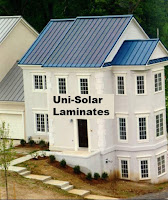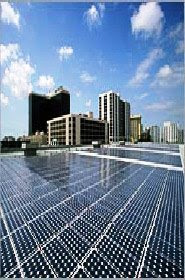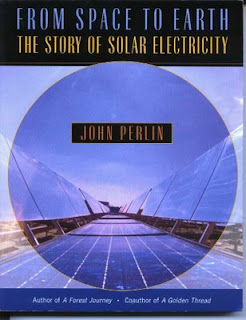
My last post contends that solar stocks in America are becoming mainstream on all of the major indexes. I've noticed over the past two weeks just how closely ten top, publicly-held solar companies, listed in the previous post, have paralleled the DJIA and NASDAQ nearly point-for-point.
While I'm obviously an advocate for solar power worldwide, I only have a general knowledge of the machinations of the stocks and bonds world. Still, investors and non-investors look to the major stocks indexes to gauge growth of any industry and particular stocks within that industry. For that reason, a new feature, tentatively called "Key 20 Solar Stocks This Week" will begin posting Friday, January 9, 2009.
Why Follow Solar Stocks?
First off, we can assume the Obama Administration will be more proactive in the realm of renewable energy. Indeed, solar and wind power could be the Magic Bullets for the new administration in that they can: (1) provide good jobs that cannot be exported: (2) reduce carbon emissions by burning less coal and natural gas for power thereby (3) mitigate the effects of global warming. The extension of the federal solar tax credit to 2016 can be a boon for solar in all 50 states. (BTW, I sold a solar kit to a man in Alaska four years ago which he installed on his summertime fishing lodge on the Kenai Peninsula. It would have cost him $20,000 to bring utility power in which he would use just four months a year. Long summer days gives him plenty of power exactly when he needs it. My overall point is that solar makes sense nationwide.)
Hedging like a college football coach, I cannot confirm nor will I deny that solar stocks could be the ones to buy in the near future. More states are instituting their own rebates and/or tax credits. Here in San Diego, Mayor Jerry Sanders announced this month that the city will begin a solar loan program in March that allows citizens to purchase PV systems at a low, fixed interest rate paid over twenty years with state property taxes. All of these incentives stimulate growth of the solar industry even during these difficult times because the future cost of electricity is, at best, any one's guess.
Selecting the Key 20 Stocks
If somewhat subjective, choosing the key solar stocks will be an informed selection on my part. The best I can say is they will be panel or inverter manufacturers; cover crystalline and thin-film technologies; and will be comprised of major stocks worldwide with the preponderance being American companies. Any stock that is delisted by the NYSE or NASDAQ obviously will be dropped from the list and replaced.
My Ulterior Motive
The posts in this blog covering the price of panels and solar stocks generated the most hits, by far. I will not be forsaking the educational angle of this blog but generating hits is important to any blogger. For those who are passionate about what they write, like I am, will know online traffic is the name of the game. It's about spreading the word.











































